Why DJ turntables are awesome

Audiophiles understand that the quality of sound is just one aspect of enjoying music. The current digitization of music has made it possible to virtually access any song that you wish. However, the convenience and simplicity of using a turntable are some of the main reasons why they are not obsolete. You’ll experience pure nirvana when you can listen to all tracks of your LP without skipping tracks or listening to ads. Here are some more reasons why you should get a turntable.
-
- Interact with the music– Unlike iPods or other MP3 players that play music at the touch of a button, you get engaged in playing the music when you use a turntable. You will have to find the perfect record in your vinyl collection, place it on the platter, move the tonearm, and lower the needle to play melodious sounds. Once you get engaged in playing the music, you will surely dedicate your time to listen to the record.
- Turntables are as affordable as ever– While you had to fork out some serious cash to get a vinyl record back in the day, they are not as pricey today. More brands have got into the market and you can find a good DJ turntable if you have a reasonable budget. You can get an affordable turntable such as the Numark PT01 or the Reloop AMS-SPIN. If you don’t mind the cost, you can get pricier models that may cost you $1000 or more. Of course, these are still less expensive than the old phonograph players.
- Unplug from the digital world– Smartphones are necessary today but that is not to say that they do not cause a lot of angst. Admit it, the endless choice of music on your Apple music app sometimes overwhelms you and you may not find something suitable to listen to. With a turntable, you get to unplug from this world of anxiety about finding the next perfect song to match your mood. Let your eyes rest from all the browsing and listen from your turntable.
-
- Versatility– We have more choices today when it comes to playing music using a turntable. If you are the old school type then you can get a classic turntable with manual features. There is also an automatic option for new school types that moves its arm at the touch of a button. Moreover, some turntables have blue tooth connectivity, USB functions, or a direct MP3 sound converter while some are battery-powered.
- They accentuate your style– It would be wrong to not mention how turntables can add style to your home with ease. If you have a stylish DJ turntables such as the Pioneer PLX1000 or the Audio-Technica AT-LP1240-USB then you know what we mean. An attractive turntable placed at the center or the side of your entertainment system invokes exudes sophistication.
- High quality sound output– There are a lot of reasons why people get record players but one of the main one is the high quality of sound. Each record is made to deliver great sounds and it is very unlikely that you will find any distortions in a turntable. You will also find that it is better to listen to live music with a turntable than a digital version as they are mastered with better dynamics. It is unlikely that the craze for turntables will ever stop, which is why you need a good quality one.
DJ basics – main tips and tricks
You will need three things if you want to play records using a turntable. These include two turntable decks, an aDJustable pitch, and lastly, a mixer that allows the DJ to set the volume or crossfade that put between the two decks. It will also allow you to choose the turntable that you want to use your headphones with when cueing up records. You should also note that the number of channels on your mixer will let you know how many sources you can connect and mix with. But what can you do outshine other DJ’s?
- Adequate preparation– As simple as it sounds, you should always ensure you prepare well before any set. You’d be surprised that this may make a big difference between a pro and a novice. Once you find out the venue of the event, take the appropriate music and some back up too.
- Work on your performance– No one wants to watch a boring deejay that only stares down their turntable when performing. The best DJ’s are the ones who sing, dance, and interact with the crowd. If not, at least smile. The best way to practice is by setting up a camera to record yourself when mixing. Try to think that you are at a live venue and put on a show. The video will help you determine if you like what you see and to note what you should change.

- Learn to scratch properly– All crowds love it when you throw in some scratching. Set yourself apart by learning how to scratch well and incorporate it into your sets. You’ll sure get some compliments regardless of the music you are playing.
- Play several genres– One way for beginners to level up their skills is by playing multiple genres. Being conversant with one genre only can limit your progression and trying out other genres will present a new challenge. You can be a great trance DJ but can you play a hip-hop set over the weekend?
- Master how to use your EQ’s– Advanced DJ’s know that the 3 band EQ is one of the most essential functions in a mixer. Yet it is not uncommon to see many newbies or even professional DJ’s finishing a complete set without touching the EQ’s. If you fail to use the EQ well then it is likely that you will experience distorted speakers and bassline clashing. This can mess up your set even if you made a perfect playlist.
- Practice– Deejaying is one of those skills that require constant practice over a long period. This is especially true if you want to master the art of scratching. When you first start scratching, it will feel completely new and you may even think you’ll damage your audio equipment. However, you should not get worried as the turntable should be able to handle all the heavy work. With time, you will start getting used to it and you may even enjoy finding breaks and scratching to them.
Price scratching
Like everything else, price is critical when choosing the best turntable on the market. Of course, there is the belief that pricier models often have more and better features. And we concur. That said, the most expensive product may not necessarily mean the best or the right one for you. You may find a good budget turntable that will not cost you more than a few hundred dollars. If the price is no problem to you then you should opt for a premium turntable such as the Audio-Technica AT-LP1240-USB or the Pioneer PLX1000. These turntables will not only offer you the best quality sound but also feature some great quality designs.
However, if you are walking on a tight rope with regards to budget then we propose something else. While you may want to save some few bucks here and there, you should be on the lookout for trustworthy and durable turntables. It is not difficult to find an affordable yet fully functional turntable. The Reloop AMS-SPIN and Numark PT01 are examples of affordable DJ turntables on the market that do not compromise on quality.
Features to consider while buying the DJ turntable
You have finally decided that you want to buy the best DJ turntable you can find. While a review of some of the top turntables is useful, you should also consider other important factors before you make a purchase. Here are a couple of important factors that you ought to review when looking for the best DJ turntable.
Brands
There are hundreds, if not thousands of audio brands that produce different audio products every year. Some are popular while others are less known but that does not mean that they don’t offer quality products. In fact, you should strive to get the best quality turntable, which may not be the most popular brand. For example, Crosley turntables are quite popular but there are less known brands such as RANE that offer better quality turntables.
In our review, we tried out several brands. Pioneer, for example, is one of the high-end brands that we review. The Pioneer PLX1000 does not disappoint too. Turntables from the pioneer brand often feature high-quality designs, good construction, awesome audio output, and other extra features. The Audio-Technica is also a popular brand that is known to offer good turntables with attractive designs. It is, however, worth noting that these top brands may cost you a fortune. If you want a relatively affordable brand then you can try the Numark, Stanton, or the Reloop.
Automatic or manual
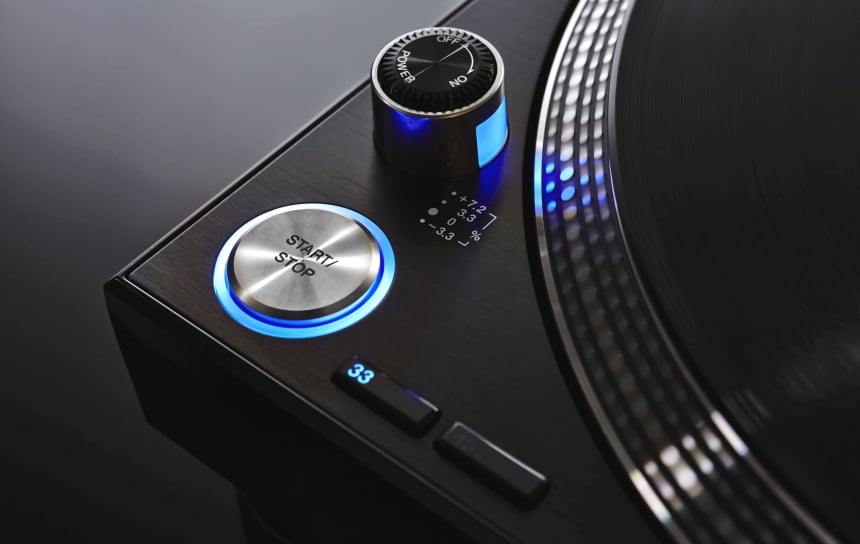
In the past, DJ’s would only need two turntables and maybe a mixer to perform whether they were playing dance music or scratching vinyl records. The advent of digital music such as MP3 and CD’s, however, brought about easy transport, better library management, easier control, and increased reliability. This prompted turntable manufacturers to go back to the drawing board and design products that could slice beats and use technology to create show-stopping sets.
Today, turntables and controllers are more powerful with some being fully automated. Highly experienced DJ’s can use manual turntables as they have years of experience with them. If you are a beginner but would still love to make jaw-dropping music then you need to get an automatic turntable. These turntables are much smarter and convenient, which means you won’t have experience difficulty setting them up or using them. Moreover, DJ controllers are integrated with specific hardware and software that make producing music a breeze.
Direct or belt drive – what’s the difference
At some point, you will have to decide whether you want a direct-drive or belt-drive turntable. You have probably heard of the two. But what’s the difference? And which one should you go for? Well, most of the turntables on the market today have a belt-drive system. This is where a motor is placed on the edge of the platter and spins a belt to rotate the turntable platter. Tor those with twin-deck turntables, you are likely to find the belt-drive motor near the inner platter. Many audiophiles will tell you that belt-drive motors such as the one in the Numark PTO1 are not quite powerful. However, you gotta admire how silent these motors are since they are separated from the platter. Belt-drive motor systems also produce consistent speed, which is great if you want to listen to your music exactly as recorded.
On the other hand, direct-drive motors get to top speed in a jiffy, which may explain why a lot of DJ’s love them. They are also relatively powerful but this does not mean that they do not have their demerits. For one, they are placed directly under the platter making it difficult to isolate its motor noise. The speed is rarely consistent too and the motor system will have to correct it regularly. The RANE Twelve & Pioneer PLX1000 are some of the turntables we reviewed with a direct-drive motor system. There are also turntables with a quartz-driven motor system, which are known for their speed accuracy. The Reloop AMS-RP-7000-MK2-SLV and Reloop RP-8000-STR are examples.
Controls
A turntable has a lot of controls. No doubt. If you are a beginner, you may be overwhelmed at the number of controls that you see on a turntable. If you are a beginner, you should not get worried about the high number of controls that you see. You will soon learn what each of them does. And it is unlikely that you will be using all the controls at once. That said, you need to get a turntable with simple controls that will not give you a headache. Some essential controls in your turntable will include
- Strobe dots– these are the dots on the side of your platter that indicate when you achieve some pitch speeds. They freeze to let you know the precise speed of the deck.
- Power switch– Either a button or a switch, the power switch will let you power the deck on/off.
- RPM buttons– Depending on the turntable, you will find an RPM button with two or three-speed options.
- Pitch Control– This is an essential part of a turntable that lets the DJ select the precise speed of the platter using a certain range. You are also likely to find a scale on the side that shows you the percentage of speed changed.
Today’s machine has several controls that it would be difficult to list them all. If you want a machine with fewer controls then the Reloop AMS-SPIN might be worth a shot.
Tonearm

The tonearm is arguably one of the most important parts of a turntable, and a lot of DJ’s agree with us on this. Both manufacturers and DJ’s have experimented with the tonearm for years since the first stylus touched a record groove. Today, there are hundreds if not thousands of tonearms to choose from with each of them made differently. Some tonearms are made from exotic material that is rather fragile while others are made from hard materials that can take a hit from regular DJ work.
The tonearm holds the stylus and guides it through the whole musical experience from the time the stylus hits the outer rim to when it gets to the center. It then takes a recording of the groove readings and converts them into electrical energy. To ensure that the stylus on your turntable sits right, the tonearm should be designed with some clever mechanism. This simply means that your tonearm should not only be balanced and aligned well but should also be adjusted for height.
A good tonearm should move freely without any resistance and one way to do this is by using an S-shaped tonearm. The Stanton T.92 MKII and Reloop AMS-RP-8000-MK2 are some examples of turntables with S-shaped tonearms. A suitable tonearm should also be long, rigid, compact but lightweight too such as the low mass tonearm used in the Technics SL-1210MK2.
Motor torque
Torque is simply used to determine how much power your motor is kicking out. If your turntable has a high torque then this translates to quick start times, which you will highly desire when you go pro. Additionally, a higher torque motor offers more resistance when you slow it down. The fast start will come in handy when performing at a live event and the resistance is great for DJ’s that love scratching. Its powerful spin and also keeps the platter spinning when back-cueing tracks.
You will notice that some turntables have a fixed torque while others will let you customize it how you want. Ideally, you want your torque to kick out a torque of at least 1.5kg/cm for a great performance. It is, however, worth noting that the figures that some manufacturers quote may not be accurate and you should not always rely on them. Instead, you can do the research yourself or test out the turntable yourself if you get the chance. We found the Audio-Technica AT-LP1240-USB and the Pioneer PLX1000 to have some high torque and they may be worth checking out if you want a turntable with higher torque.
Dimensions and weight
Like buying any other equipment, it is important that you take a look at the dimensions and even the weight of the product before purchase. Dimensions of a product are important as they let you know your storage or transport options. You do not want an extremely large turntable that takes too much space in your truck that you cannot carry other musical equipment. At the same time, medium to large-sized turntables are often attractive and may improve the aesthetics of any room. This is especially true if you get two decks of a good-looking turntable such as the Stanton ST.150 MKII.
With regards to weight, you may find it surprising that you actually need a heavier turntable. When it comes to getting the best DJ turntable, heavier is often better. This is because the vibration from the music or even the motor causes several problems when one is using the turntable. It is not uncommon to experience a degradation in the quality of sound or find that some tracks keep skipping. In other instances, there is a feedback loop from the speakers to the turntables through to the stylus. To prevent such problems, we recommend that you get a heavier turntable. If you want to use a turntable for paid gigs then you should invest in a heavy turntable with sturdy construction. The Technics SL-1210MK2 is one of the heavier models that we tried out, it was quite stable and we did not experience any vibrations.
Guarantees
A guarantee from the manufacturer offers clients confidence in their products for the stated period. Turntables are long term investments that you hope will last for a couple of years before you need to make a replacement. That said, you should get a product with good guarantee terms and a reasonable warranty period. Since turntables are technical audio equipment that may cost you a few hundred dollars, you do understand why we stress this is an important factor. All products that we reviewed have a one-year limited warranty, which we think is enough to guarantee that the product is in mint condition when you receive it.
Pitch control
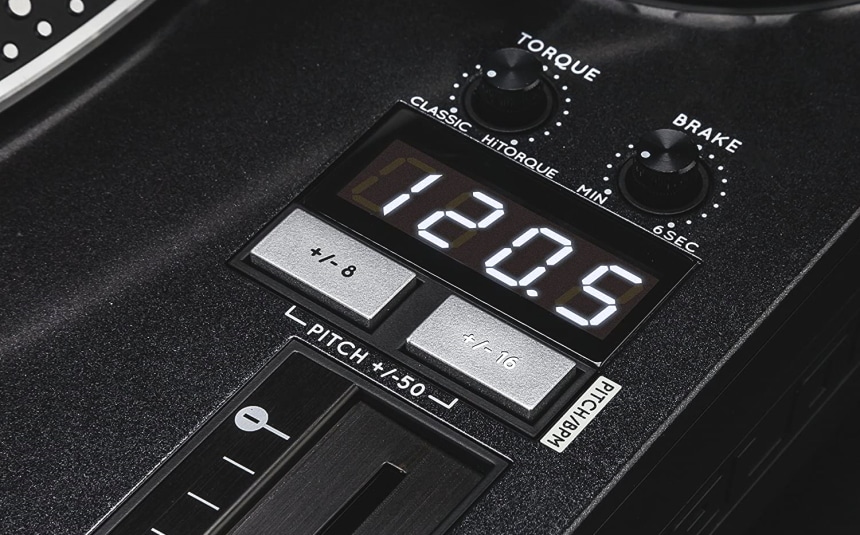
The pitch control is also considered to be one of the most important parts of a DJ turntable. It helps DJs to fine-tune the speed of their record when playing and it is often measured in percentages. You will have to first check if the pitch control in your turntable is working well. How do you do this? You may ask. Well, you should first use the strobe to determine if the platter is moving at the right speed. The strobe lights should also change accordingly when you move the pitch control in one way or another.
With the pitch control, you can set the precise speed of the platter with a range of +/-8%. This range is not always the same on all decks and you may find that the range is wider on other turntables. To increase the speed of rotation of the platter, you should move the pitch control in the direction that the platter rotates. To slow down the speed of the platter, you can move the pitch control upwards. A significant number of turntables that we reviewed including the Reloop AMS-RP-8000-MK2 and RANE twelve have three pitch control options with a ±8%, ±25%, and ±50% range.
Power
Many turntables on the market are powered by electricity. And while this may be the best option, it also comes with its own demerits. Other turntables such as Numark PTO1 and the Reloop Spin have a dual power option that allows them to use batteries. This feature can come in handy when you need to perform out in the wild. These turntables also have internal speakers to ensure that they are fully reliable without the need for an electric power supply.
Phone Pre-amp
The cartridge in your turntable produces a precise signal but it is often weak. This is why you may have to connect to a phone pre-amplifier if you wish to get to loud sound from your speakers. While it may seem like you do not need a phone pre-amp, it may be in-built in your sound system. You can find a phono preamp in your turntable or have it built in your receiver. You can also find a phono pre-amp in a powered speaker or get it separate on a system.
Other parts and features
Turntables have lots of parts and extra features that ensure these records are playing well. While it will takes some time to know and learn how to use all the different features in a turntable, you become pretty good once you can work your way around it. Here are some other parts and features that you should also consider when purchasing a turntable.
- Cartridge– You may have heard of the cartridge in a turntable as it is quite important when playing records. It is simply a minute attachment that is fitted at the end of the tonearm where the stylus is plugged. The cartridge has a magnet that works to transform the vibrations that occur on the stylus to electric energy. A DJ mixer will then use its phono pre-amp to amplify the signals before directing the sound to the speaker.
- Anti-skating dials– Without this feature, turntables are less likely to work as it helps to counter the force pulling the cartridge to the center of the platter. Once you use this control, it sets the anti-skating force that is enough to handle this type of work.
- Counterweight– As the name suggests, this feature is used to counter and balance the weight exerted by the tonearm. It does this by applying the perfect amount of pressure to the cartridge. You will need about two or three grams as the tracking weight but it is not uncommon to find DJ’s adjusting it to be as heavy as possible. They may even use extra weights to increase the counter weight and prevent skipping of tracks.
- Cue leveler– This feature is rarely used by experienced DJ’s. It helps you to lift the needle without having to touch the cartridge. Some DJ’s prefer using the arm of the headshell to lift the tonearm instead.
- Headshell– As stated above, this part will help you to mount the cartridge and needle to the platter. Turntables will often include a headshell holder that can help you store any headshell that you are not using.
- Pitch control and pitch control range– the pitch adjuster, as highlighted above, is a useful feature when it comes to beat mixing. This because it allows you to vary the speed of the motor and subsequently, the speed of play and tempo. Moving it up lowers the pitch while a shift downwards will speed up play and the pitch. You may find a scale on the turntable that lets you see the percentage change. A pitch adjuster range may be included, which doubles up or down, the speed of the record but you may need some experience under your belt for more accuracy.
- Pitch reset– This feature helps to reset the pitch of the record to 0 regardless of where you set the pitch adjuster. In other words, it helps to reset the pitch control to 0 and pressing it again returns the pitch to its current level.
- Slipmat– You will always find a slippy felt mat that rests between the record and the surface of the platter. This thin and slippy mat is essential to scratching as it aids DJs in stopping the record while the platter still spins.
- Spindle– The spindle is the part that holds the center of your record. Some records may be accidentally designed in a way that the hole is not the most central part. This will affect playback as the tonearm will shift irregularly with each revolution.
- Stylus/Needle– You have probably heard a lot about the stylus (also called the needle) in a turntable. It is a small piece of diamond attached to a metal arm to pick up sound from the record. The stylus vibrates when the diamond tracks through a vinyl and a sound is produced.






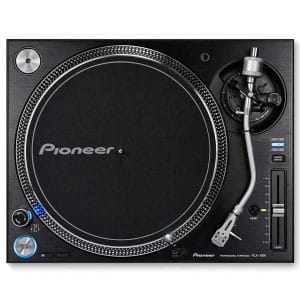
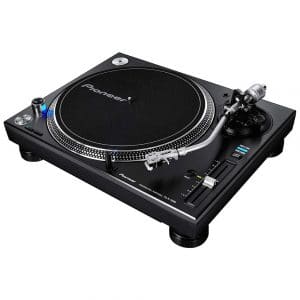
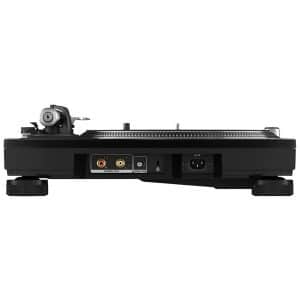

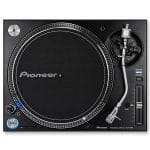
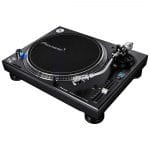
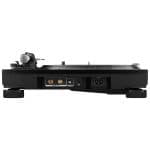
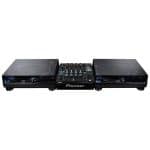
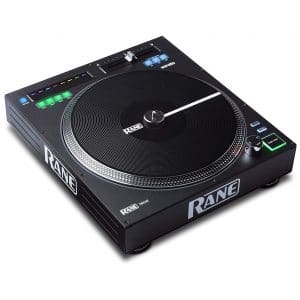
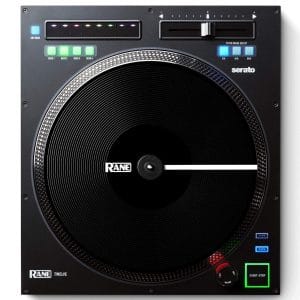
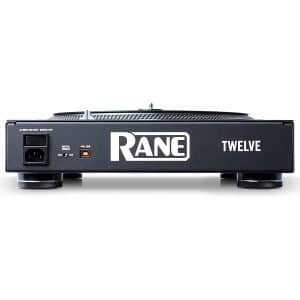

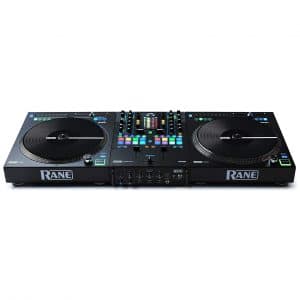
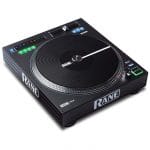
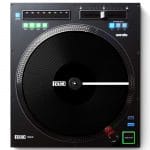

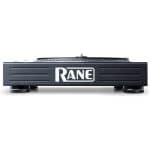

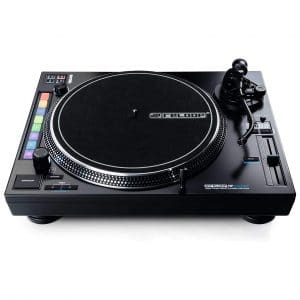
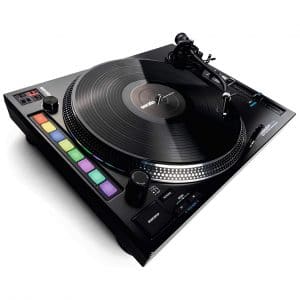
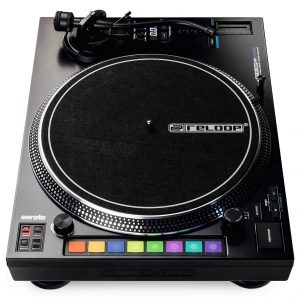
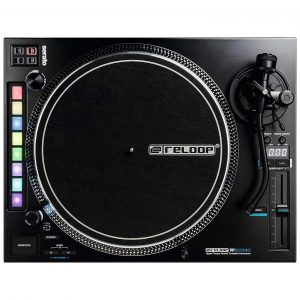
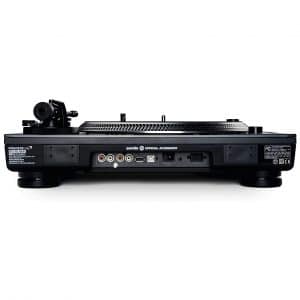

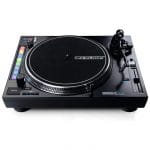
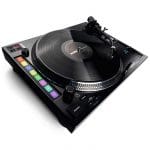
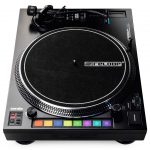
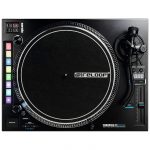

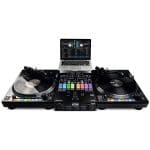


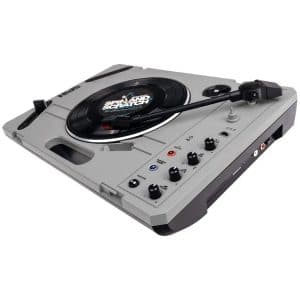
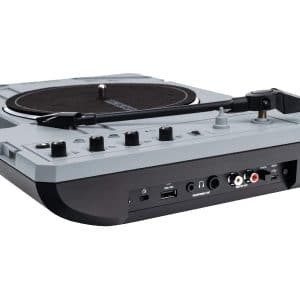
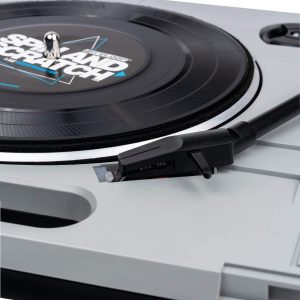
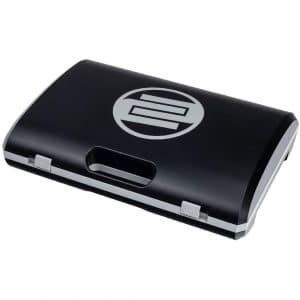
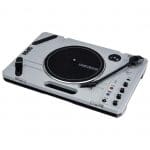
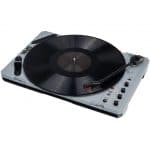
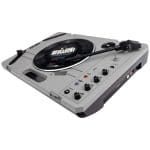
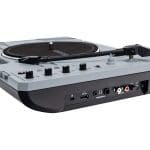
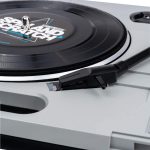
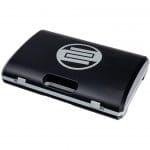


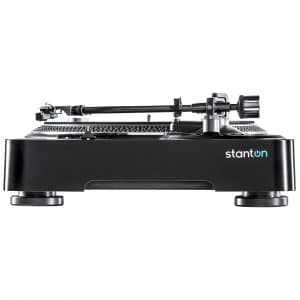

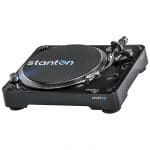
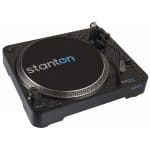
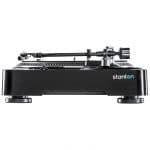

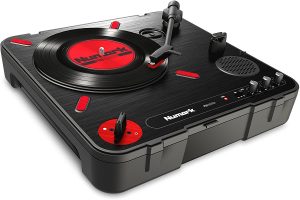


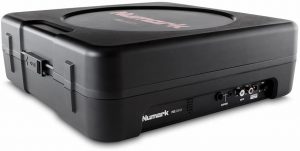

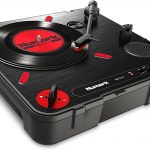
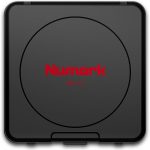
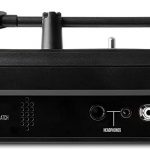
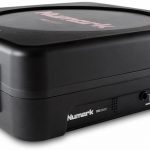
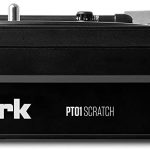
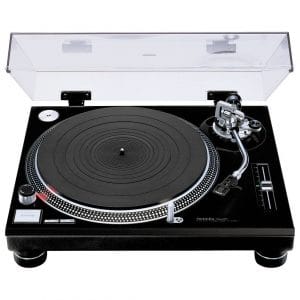
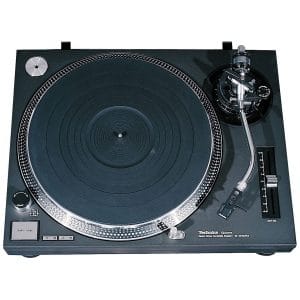



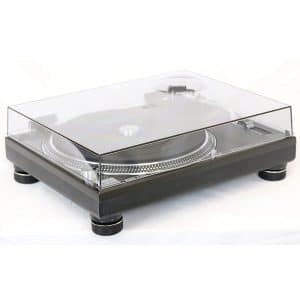

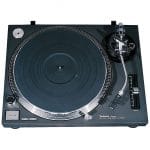


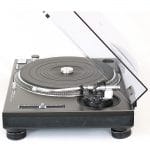
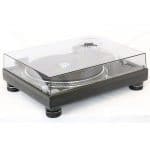
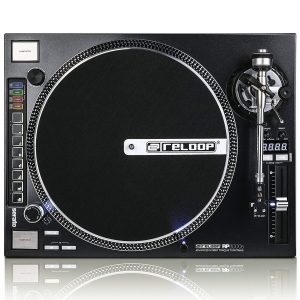



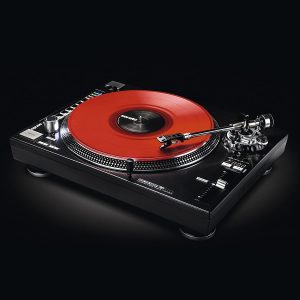
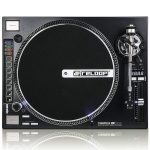



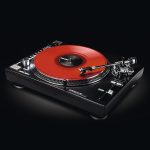

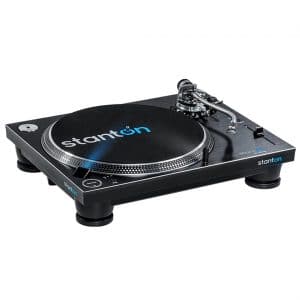
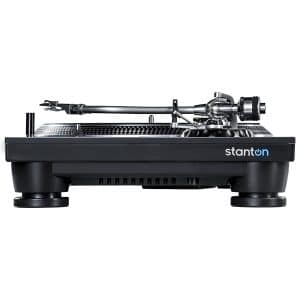

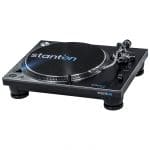
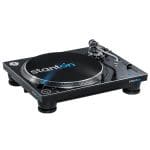
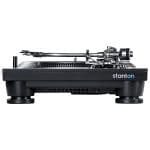
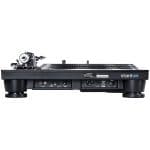
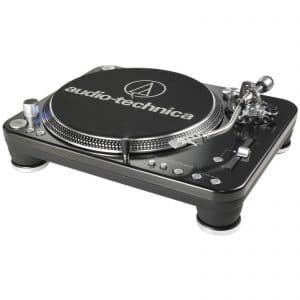

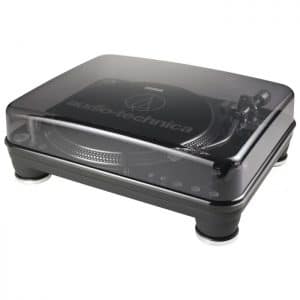

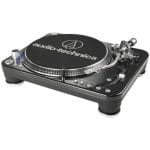
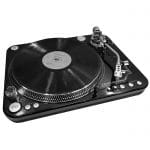

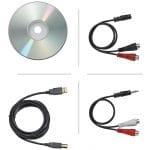
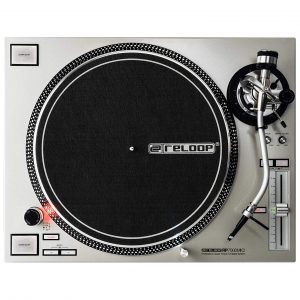
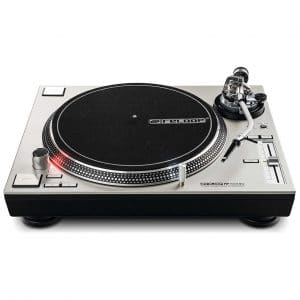
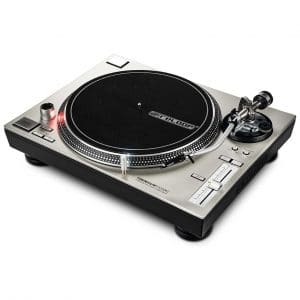


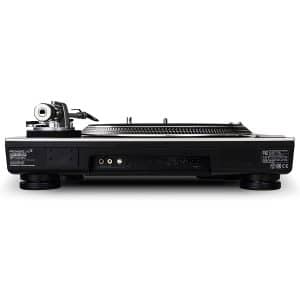
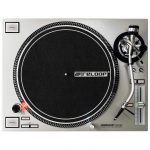
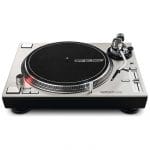
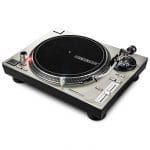
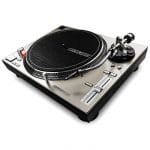
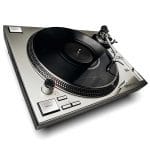
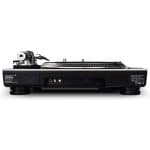














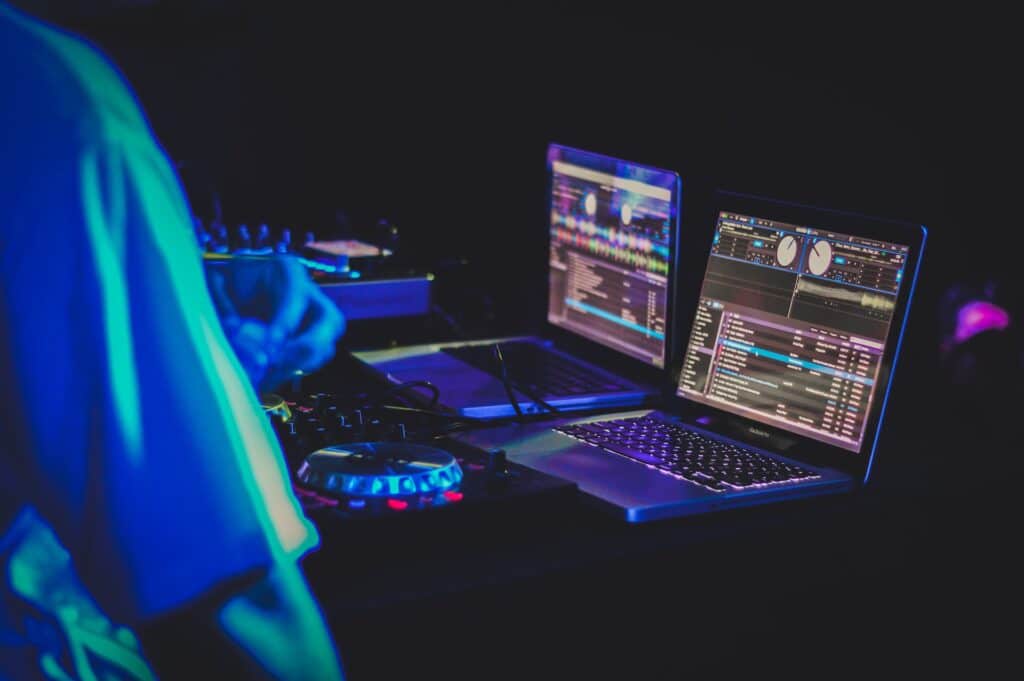
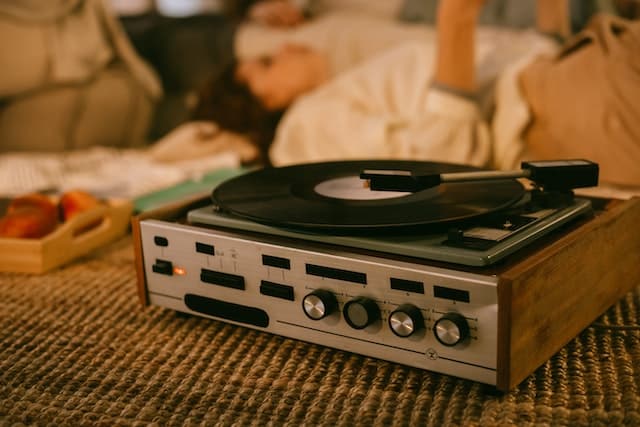
You called the RP 8000 mk2 a “controller” a couple times and the Rane 12 a turntable ????
The 8000 mk2 is 100 percent a turntable and the Rane is basically a controller since it can’t be used without a cpu.
And for the record, the RP 8000 mk2 is better than the PLX 1000